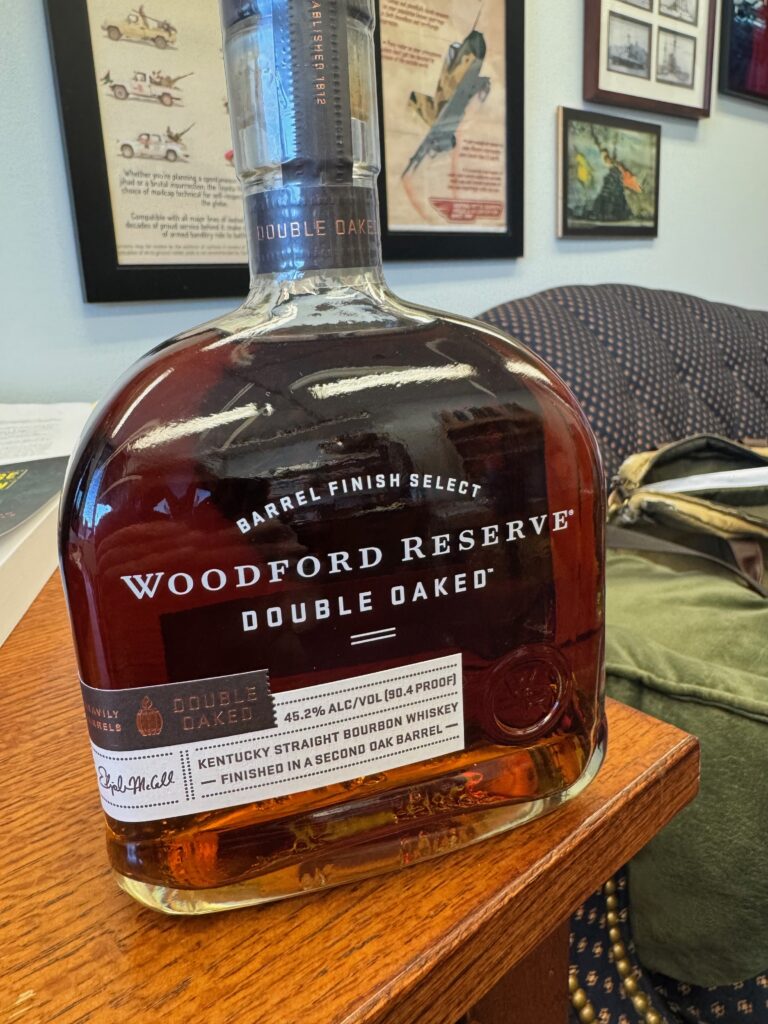Is Bourbon Done?

Liquor sales soared during the pandemic as Americans flush with cash splashed out on booze, making cocktails at home and drinking more frequently. Now drinkers are cutting back, plowing through bottles they accrued in recent years and trading down to cheaper brands.
The growing popularity of anti-obesity drugs, cannabis and low- and no-alcohol drinks is increasingly hurting sales, too. The U.S. Surgeon General recently said alcohol should carry cancer warning labels, a recommendation that if enacted could hurt sales for an industry already contending with a pullback in drinking by younger people.
Growing inventories are, like, not good.
“Having high inventory in itself is not a problem if you think demand is going to grow, because you need to prepare for higher demand in six years’ time. But today we also have an all-time high ratio of inventory to bourbon actually being sold. That tells us that not only do we have high inventory, but it’s probably higher than it should be when we consider the demand that’s out there,” Sarwat said. “So this really begs the question: Are we headed for a U.S. whiskey glut?” Sarwat said in recent years many producers were worried about losing market share to other distillers, so they put up more and more barrels. According to Gov. Andy Beshear’s office, his administration has seen more than $4.2 billion in new investment, including about 100 new locations and expansion projects, in bourbon and spirits.
Let’s expand our customer base!
Sarwat said in November that Bernstein estimates “excess supply in four to five years’ time” and predicted companies would mitigate a potential “hard landing” by encouraging further growth outside the U.S. “Today about a third of U.S. whiskey volumes are sold outside the U.S. … Penetration is incredibly low,” compared to Scotch and other categories, she said. “You have room for growth.”
But…
The possibility of impending tariffs could make overseas growth difficult. Chris Swonger, president and CEO of the Distilled Spirits Council of the U.S., said in November, after the re-election of President-election Donald Trump, that retaliatory tariffs from trade disputes during Trump’s first term crashed the industry — and they could again.
Let’s move those deck chairs around a bit!
In a statement released in January, newly elected KDA board chair Ken Lewis, founder of New Riff Distilling, said the industry is eager to work with governments around the world on solutions to protect Kentucky jobs at distilleries large and small. “Global trade has helped spirits of all kinds reach new markets, and while international bourbon curiosity has grown tremendously, it’s not the only spirit people are turning to,” Lewis said in the statement. “As governments work through disputes, the bourbon industry wants to do all it can to keep spirits out of the line of fire.” Lewis told the Wall Street Journal that the Kentucky bourbon industry is making nearly three times as much as it is selling. “We’re in a very serious correction right now which is perhaps overdue,” Lewis said. Some investors are dumping stock, exacerbating the glut of barrels.
The upshot… there may be a lot of cheap bourbon available soon. The industry is loathe to let supply and demand do their job both because of the long-term production issue (you need to make production decisions several years in advance of sale) and because brands are extremely reluctant to allow individual bourbons to drift between price points. My guess is that the Trump tariff environment is going to hit the industry very hard, and that problems with foreign tourism are going to push a lot of marginal producers under. This will be terrific for US consumers, bad for international consumers, and extremely bad for the bourbon industry.


